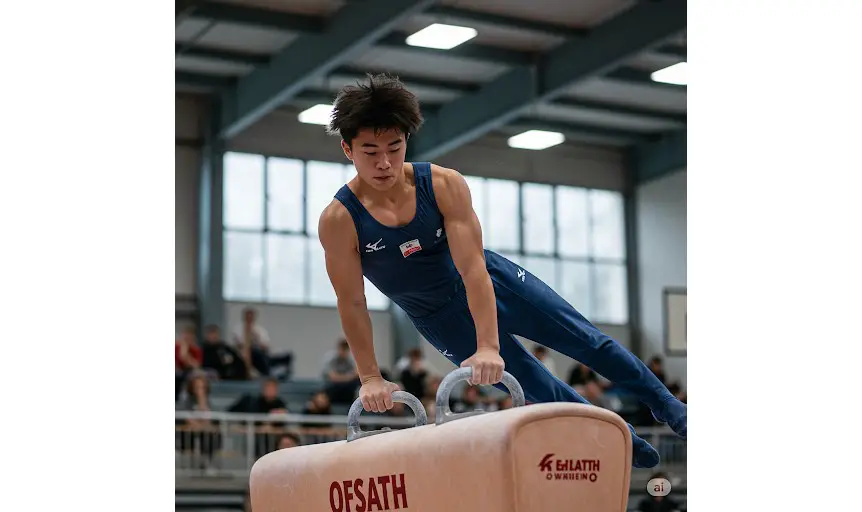
The Art and Athleticism of Pommel Horse: A Comprehensive Guide
Pommel Horse stands as one of the most challenging and mesmerizing disciplines in artistic gymnastics. This sport, a test of strength, balance, and coordination, has captured the attention of athletes and fans alike. Over the centuries, it has evolved into a specialized event that demands technical precision and artistic flair. Today, it holds a unique place in the world of gymnastics and broader athletic competitions. This blog delves into the rich history, global popularity, amateur involvement, professional leagues, political and social impact, and rules of Pommel Horse.
Origins and History
The origins trace back to ancient civilizations. Early forms of the apparatus were used by soldiers to practice mounting and dismounting horses. In Greece, training on wooden horses prepared warriors for battle. The Romans adopted similar methods, refining the equipment into a more structured form.
Modern Pommel Horse emerged in Europe during the 19th century. Friedrich Ludwig Jahn, often called the “father of gymnastics,” standardized the apparatus and its techniques. He introduced it as part of the broader gymnastics curriculum in Germany. By the late 1800s, it became a staple in international competitions, including the Olympic Games, where it debuted in 1896.
Throughout the 20th century, it evolved into an artistic and athletic discipline. Gymnasts began incorporating intricate routines that showcased both technical skill and creativity. This shift elevated the sport, solidifying its place in modern gymnastics.
Global Popularity of Pommel Horse
It enjoys significant recognition worldwide. It is an integral event in artistic gymnastics, featured in major competitions like the Olympics, World Championships, and continental tournaments. Nations with strong gymnastics traditions, such as China, Russia, the United States, and Japan, dominate the sport. These countries have produced legendary gymnasts who excel on the apparatus.
In Europe, countries like Romania, Hungary, and Great Britain have a rich history in Pommel Horse. Asian nations, particularly South Korea and North Korea, have also shown remarkable prowess. The sport’s popularity continues to grow in regions like South America and Africa, where gymnastics programs are expanding.
Televised competitions and social media have amplified Pommel Horse’s global reach. Spectators admire the athletes’ ability to perform complex movements with grace and precision. This visibility has inspired young gymnasts worldwide to pursue the discipline.
Amateur Pommel Horse: Youth and Schools
Amateur Pommel Horse forms the foundation of the sport. Youth programs, schools, and local clubs introduce children to gymnastics at an early age. These programs emphasize basic skills, physical fitness, and a love for the sport.
In many countries, schools incorporate gymnastics into physical education curriculums. Specialized clubs and academies offer advanced training for aspiring athletes. Coaches focus on developing core strength, flexibility, and discipline—essential traits for mastering Pommel Horse.
Youth competitions provide opportunities for amateur gymnasts to showcase their talent. Events like national championships and junior tournaments help identify potential stars. Many gymnasts begin their journey on Pommel Horse through such grassroots programs.
Accessible facilities and coaching play a vital role in amateur Pommel Horse. Governments and sports organizations invest in infrastructure to nurture young talent. These initiatives ensure the sport’s growth and sustainability at the grassroots level.
Professional Leagues and Competitions
Professional Pommel Horse competitions attract the best gymnasts from around the world. These events highlight the sport’s technical and artistic aspects. The Olympic Games represent the pinnacle of Pommel Horse competition. Gymnasts perform routines that push the boundaries of human capability.
The FIG (Fédération Internationale de Gymnastique) governs international competitions. Events like the World Artistic Gymnastics Championships and the Gymnastics World Cup Series feature Pommel Horse prominently. These platforms showcase the sport’s global appeal.
Regional leagues and national championships further enhance professional Pommel Horse. For example, the European Championships and Asian Games feature thrilling performances. In the United States, the NCAA Gymnastics Championships spotlight collegiate athletes excelling in Pommel Horse.
Sponsorships and endorsements support professional gymnasts, enabling them to train and compete at the highest level. These partnerships also increase the sport’s visibility, attracting fans and aspiring athletes.
Political and Social Significance of Pommel Horse
It holds political and social significance beyond the gymnasium. Historically, gymnastics served as a tool for national pride and unity. In the 20th century, countries like the Soviet Union and East Germany used the sport to showcase their athletic superiority on the world stage.
Today, Pommel Horse symbolizes perseverance and excellence. Gymnasts from diverse backgrounds overcome challenges to compete at the highest level. Their journeys inspire millions, breaking barriers and promoting inclusivity.
Socially, the sport fosters community and collaboration. Gymnastics clubs and organizations unite individuals with a shared passion for Pommel Horse. These connections create lasting friendships and mentorship opportunities.
Additionally, it contributes to physical and mental well-being. The sport promotes fitness, discipline, and resilience. It empowers participants to achieve their goals, both on and off the apparatus.
Rules
Understanding the rules is essential for appreciating the sport. Athletes perform routines on a horizontal apparatus with two handles (pommels). The goal is to demonstrate continuous circular movements, known as “circles,” while maintaining balance and control.
Judges evaluate routines based on difficulty, execution, and artistry. Points are awarded for completing complex elements like flairs, spindles, and scissors. Deductions occur for errors such as breaks in rhythm, lack of fluidity, or touching the apparatus with the body.
Athletes must mount and dismount the Pommel Horse with precision. A clean routine requires transitions between pommels and the apparatus’s ends. Proper technique and posture are crucial for maximizing scores.
Competitors adhere to a time limit, typically 30 to 50 seconds, to complete their routines. This constraint adds intensity and excitement to the event. Gymnasts must balance speed and control to execute their routines flawlessly.
Conclusion
It exemplifies the blend of artistry and athleticism that defines gymnastics. Its rich history, global popularity, and cultural significance make it a cherished discipline. From amateur programs to professional leagues, the sport inspires athletes and fans worldwide. By celebrating Pommel Horse, we honor the dedication, skill, and passion that drive this extraordinary sport forward.




